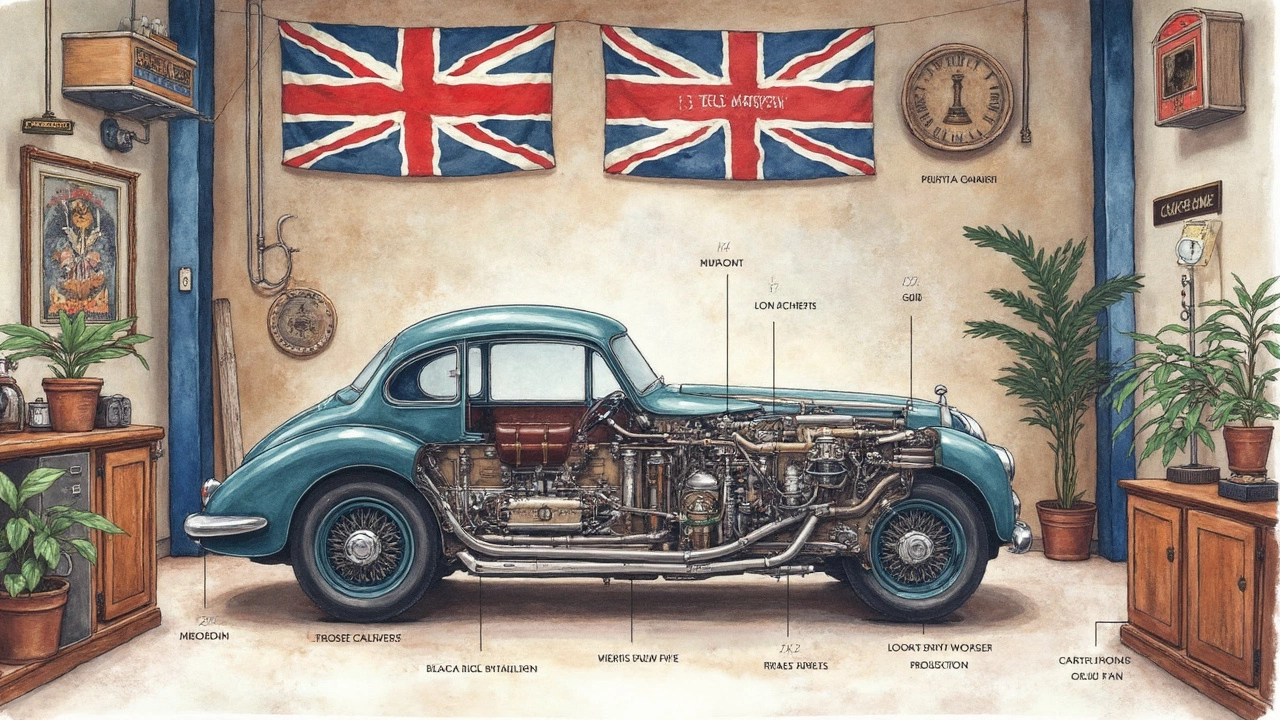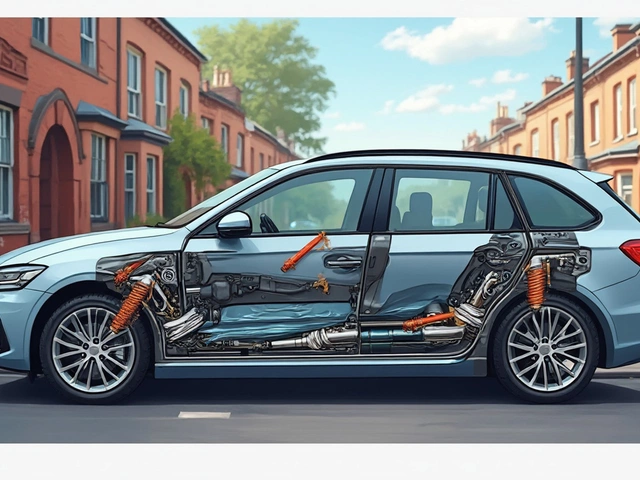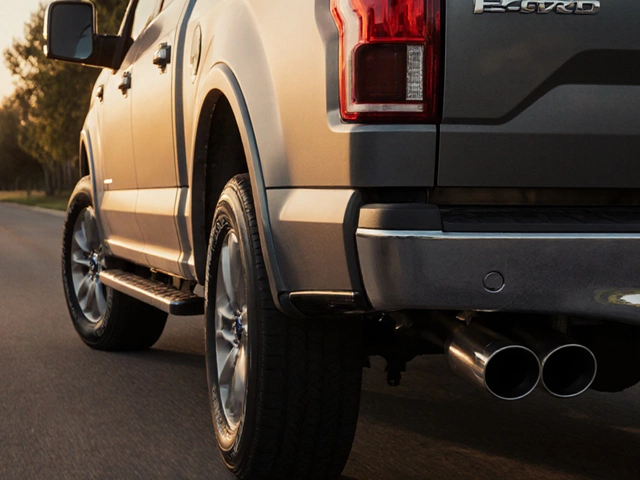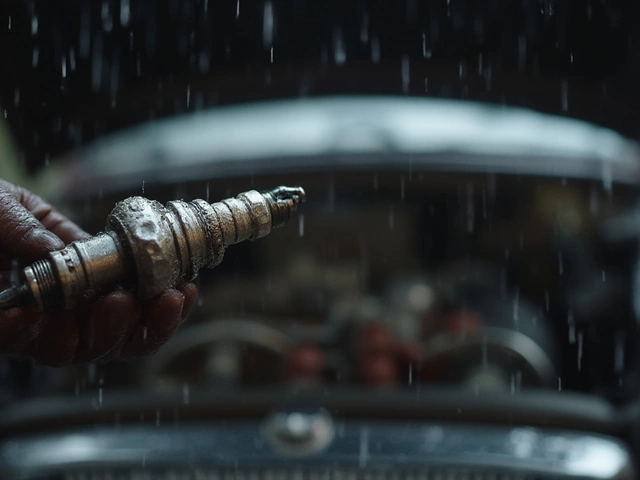Changing the fuel pump on your ride? You might be wondering if you really need to disconnect the battery first. Well, it's not just a suggestion—it's a must-do. Here's why: disconnecting the battery is all about safety. It prevents any accidental electrical sparks while you're working on the fuel system. Sparking near fuel is a combo nobody wants.
You'd be surprised how often folks skip this step, thinking it's not necessary. But why risk it? Cars these days are complex, and a little electric jolt can mess up more than just your day. The power cut ensures you won't accidentally trigger the fuel pump while you're elbow-deep in the repair.
- Why Disconnecting the Battery Matters
- Potential Risks of Skipping This Step
- Simple Steps to Safely Disconnect the Battery
- Interesting Facts About Fuel Pumps
- Troubleshooting Common Fuel Pump Issues
Why Disconnecting the Battery Matters
So, you've got the hood up and the toolbox ready, but before diving into the guts of your car, there's one crucial step: cutting the power. Disconnecting the battery might seem like a chore, but it's a key safety measure when you’re swapping out the fuel pump.
Let's face it, working with car electronics can be a bit sketchy if you don’t know what you're doing. The main issue is the risk of accidental sparks. Cars run on electrical systems, and a bit of stray electricity can ignite fuel vapors. We're not just talking about a scare—we're talking about fire hazards.
No Sparks, No Fires
Fuel pumps are lurking near flammable stuff, and sparks are their nemesis. By disconnecting the battery, you completely remove this threat. It’s like clicking the 'off' button on a hazard switch.
Protecting Your Car's Electronics
Modern cars are packed with sensors and electronics that hate power surges. An unexpected jolt from a charged system can damage these parts and lead to costly repairs. Snipping the power flow prevents any short-circuit surprises.
How to Disconnect Safely
- Turn off the ignition and remove the keys. Safety first!
- Locate the battery. You'll usually find it under the hood.
- Use a wrench to loosen the nut on the negative battery terminal (it’s the black one).
- Carefully remove the cable and tuck it to the side. Make sure it doesn't spring back into contact.
And there you go—your car's ready for some work, and you’ve kept things safe and sound. It's a small step, but it makes a big difference.
Quick Stats: Battery and Fuel Pump Safety
| Task | Average Time | Importance |
|---|---|---|
| Battery Disconnection | 5 minutes | High |
| Fuel Pump Removal | 1 hour | Moderate |
Taking these precautions can save you from potential disasters and unexpected expenses. So, never skip this simple yet crucial step.
Potential Risks of Skipping This Step
Skipping the battery disconnection might seem like a shortcut when changing a fuel pump, but it's really a recipe for trouble. For starters, when you leave the power on, you run the risk of accidentally sending a charge through the system while you're working. One tiny spark and voila—you have a potential fire hazard on your hands. Fuel and sparks? Not exactly peanut butter and jelly.
Risk of Electrical Shock
Believe it or not, even experienced tinkerers forget this step sometimes, and it can lead to a nasty electrical shock. Your car's system isn't messing around with power, and a mix-up could send a jolt your way. Nobody wants to experience a zap while trying to fix their ride, right?
Damage to Electronic Components
Modern cars are full of sensors and electronic doodads that can fry if they get a voltage spike. Keeping the battery connected means all those delicate circuits are still live, and one wrong move might mean you're shelling out for more than just a new fuel pump. Why risk your engine control unit or other pricey electronic components?
Fuel Pump Activation
If the battery stays connected, there's a chance the fuel pump might get accidentally activated while you're swapping it out. This can be messy and downright dangerous, especially if you're fiddling with connections and removing the old pump. Nobody wants a face full of fuel.

Simple Steps to Safely Disconnect the Battery
When it comes to changing your car’s fuel pump, disconnecting the battery shouldn’t be skipped. If you’re wondering how to do it without a fuss, here’s your straightforward guide.
Step 1: Ensure Safety First
Park your car in a well-ventilated area and make sure it’s completely turned off. You don’t want any electrical mishaps while you’re hands-on. Grab a pair of safety gloves and goggles to keep it safe and clean.Step 2: Pop the Hood
Lift the hood and secure it properly. You’ll be working close to the battery, so it's best to have clear access. No one wants that hood falling on them mid-task.Step 3: Identify the Battery Terminals
Locate the battery and identify the terminals. The negative terminal usually has a minus (-) sign or a black cable, and the positive has a plus (+) sign or a red cable. Sound simple? It really is.Step 4: Disconnect the Negative First
Using a wrench, loosen the nut on the negative terminal. This is crucial—always disconnect the negative first! It prevents any power running through the wiring while you’re working away. Once loosened, carefully lift the cable off the terminal and tuck it aside to avoid it snapping back accidentally.Step 5: Disconnect the Positive Terminal
Repeat the same procedure for the positive terminal. Using a separate wrench to avoid sparks, loosen and remove the cable hinge. Just keep an eye on any excess tools you might have lying around—they shouldn’t make contact with the battery posts.With these steps, you can rest assured your battery is safely disconnected, and you’re a step closer to tackling that fuel pump change. Who knew car maintenance could be this smooth?
Interesting Facts About Fuel Pumps
Fuel pumps are like the heart of your car's fuel system, making sure that gasoline gets from the tank to the engine. But did you know that they need to maintain a very precise pressure to work right? Most modern fuel pumps keep the fuel delivery pressure within an exact range to ensure optimal engine performance.
One cool fact is that electric fuel pumps can produce around 30-40 pounds per square inch (PSI) or more, ensuring your engine runs smoothly even at high speeds. This high-pressure delivery helps prevent vapor lock, where fuel evaporates in the lines, leading to stalling—definitely something you don't want on your Sunday drive.
From the factory, cars often have fuel pumps designed to last the lifetime of the vehicle, yet they still rank among common replacements in older cars due to wear and tear. Interestingly, today's fuel pumps are often integrated with fuel level sending units. This combo not only saves space but also leads to those dreaded dash warning lights when something's amiss.
“Most fuel pump failures are due to overheating, low fuel levels, or polluted fuel,” says Mike Allen, a contributing editor for Popular Mechanics.
Fuel quality is a silent killer for fuel pumps. Tiny sediments and impurities can clog the pump, leading to its eventual failure. It's a good idea to keep the tank at least a quarter full at all times to let the pump stay submerged and cool. The cooling factor is crucial, particularly because not all pumps are created equal; some brands offer better longevity and efficiency due to superior materials and engineering.
Here's an interesting tidbit: Electric fuel pumps make a distinct whirring noise when you turn the ignition key. This sound indicates that the pump is priming the system by sending fuel from the tank to the engine. If you listen closely, a failing pump might make high-pitched or irregular noises—an early warning sign that’s easy to miss! Keeping your ear out for unexpected sounds might help you save on costly repairs down the road.
To wrap up, maintaining your fuel pump is a mix of good practices like using quality fuel and keeping an eye on things like sounds and fuel levels. Take care of it, and it'll take care of you and your wheels.

Troubleshooting Common Fuel Pump Issues
When your car decides it doesn't want to start or stutters on the road, a faulty fuel pump often tops the list of usual suspects. Figuring out the root of the problem can save both time and money. So, where do we start?
Listen for the Fuel Pump
The first step in diagnosing a fuel pump issue is by simply listening. Kick on the ignition to the 'on' position—just don’t crank the engine. A healthy fuel pump makes a soft whirring sound as it primes the system, usually lasting a couple of seconds. If there's silence, that's a red flag.
Check the Fuel Pump Fuse and Relay
Next up, grab your car's manual and locate the fuel pump's fuse and relay. If either is blown or faulty, the fuel pump won't get the power it needs. Replace them if necessary and see if that kicks the pump back into action.
Low Fuel Pressure
An often overlooked issue is low fuel pressure, which can result in poor performance or stalling. Using a fuel pressure gauge, check if the pressure meets your car's specifications. If it's off, the fuel pump might not be entirely dead, but it's worth keeping an eye on.
Bad Fuel Economy
If you're burning through gas faster than usual without an obvious reason, the fuel pump could be delivering more fuel than needed or could be inconsistent. Keep tabs on it with a mechanic—it might be time for a replacement soon.
| Symptom | Possible Causes |
|---|---|
| No start | Dead fuel pump, faulty relay |
| Whining noise | Fuel pump nearing end of life |
| Engine sputtering | Intermittent fuel pump performance |
Regular Maintenance
Like any car part, regular maintenance goes a long way. Ensure your fuel filter is clean, and every once in a while, add a fuel system cleaner to your tank.
Always remember to approach troubleshooting methodically, checking off each possible issue before jumping to conclusions. If you’re in doubt, a trip to your local mechanic can provide peace of mind.






